A Teotihuacan altar found in a dwelling in the ancient Maya city of Tikal highlights the interaction between these two cultures — and the grisly rituals they both practiced.
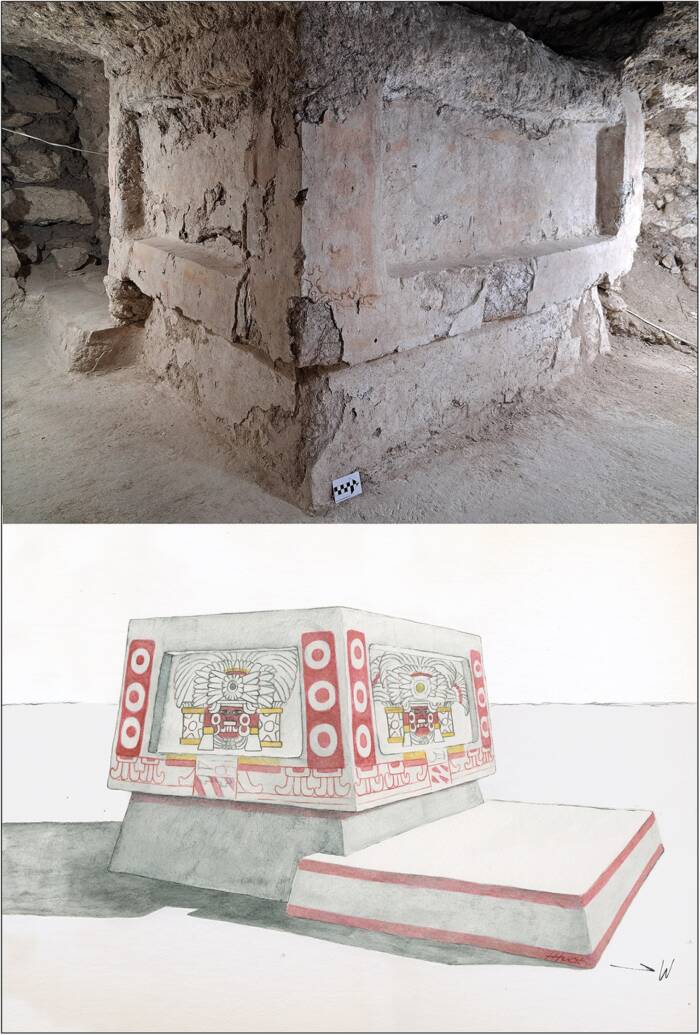
Photograph by E. Román; rendering by H. HurstTop: The altar as it appears today. Bottom: An artist’s rendering of what it may have originally looked like.
In Guatemala’s Tikal National Park, which was once the center of the Maya civilization, archaeologists discovered a fifth-century C.E. altar from the Teotihuacan culture. The Teotihuacan people lived more than 700 miles north of Tikal, near present-day Mexico City, so the altar’s presence in a former Maya city points to a surprising relationship between the two groups.
Even more surprising, however, is the altar’s history. Archaeologists found the remains of three children under the age of four alongside the artifact — suggesting that it was once used for child sacrifice.
Tikal And Teotihuacan: Two Influential Ancient Mesoamerican Cities
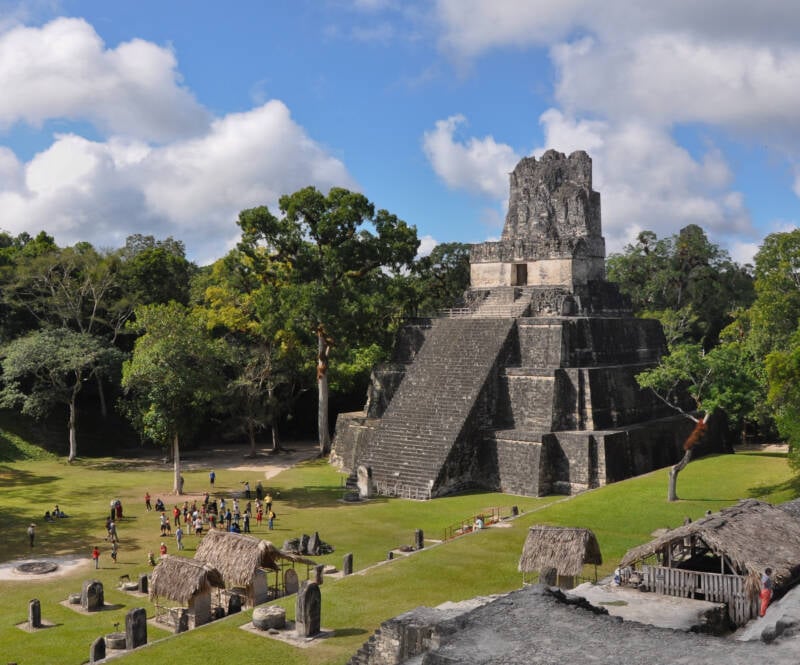
Mike Vondran/Wikimedia CommonsThe Temple of the Masks, or Tikal Temple II, in the ancient city of Tikal.
Tikal, an ancient city-state deep in the jungle of Guatemala, was once a powerful hub of the Maya civilization. During its peak, between 200 and 900 C.E., it was a major political, economic, and military center. Today, it is known for its massive temple pyramids, which still tower over the forest canopy.
Tikal was once home to tens of thousands of people and boasted complex roadways, ceremonial plazas, and ball courts. After centuries of prominence, however, the city mysteriously declined, likely due to a combination of environmental stress, warfare, and societal upheaval.
Around the same time, over 700 miles to the north near modern-day Mexico City, stood Teotihuacan, “the city of the gods.” The massive city was one of the largest and most influential in ancient Mesoamerica, reaching its peak around 500 C.E. At the time, it housed more than 100,000 inhabitants and covered an area of eight square miles.
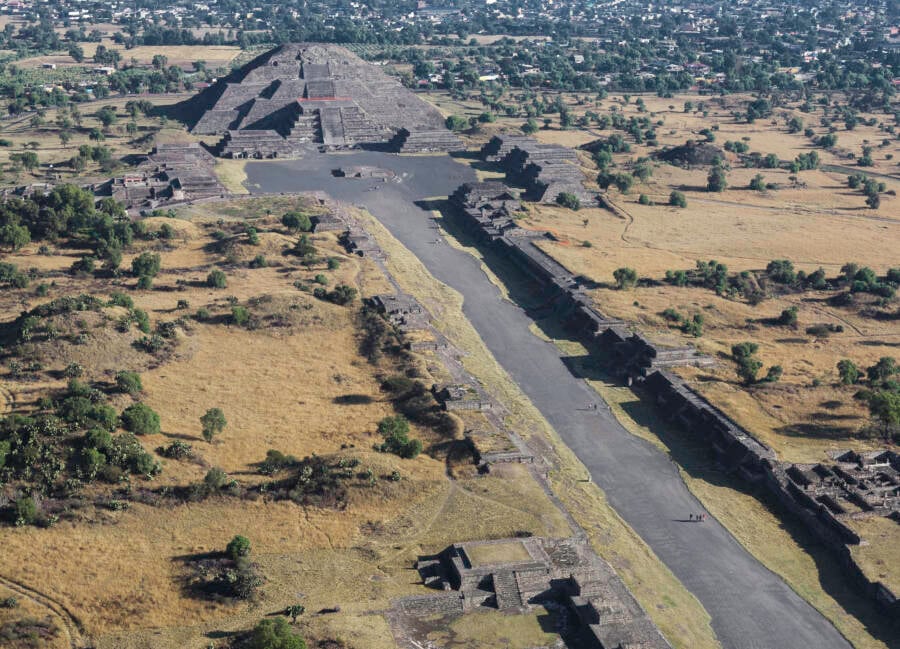
Ricardo David Sánchez/Wikimedia CommonsA view of Teotihuacan’s Avenue of the Dead and Pyramid of the Moon.
The city is famous for its grand Avenue of the Dead, which leads to monumental structures like the Pyramids of the Sun and Moon. In ancient times, Teotihuacan was a multicultural metropolis that had a lasting influence on the region. Despite this, however, its original builders remain unidentified, and the reasons for its abandonment remain a mystery to this day.
It was rediscovered later on by the Aztecs, who gave the city its name.
The discovery of a Teotihuacan altar at the heart of Tikal shows that the Maya and Teotihuacan cultures were closely linked despite the physical distance between them. Curiously, evidence found at the altar also suggests it was used for child sacrifices, as lead archaeologist Lorena Paiz told the Associated Press.
“The remains of three children not older than four years were found on three sides of the altar,” Paiz said.
María Belén Méndez, an archaeologist who was not involved with the project, said the discovery confirms “that there has been an interconnection between both cultures and what their relationships with their gods and celestial bodies was like.”
Evidence Of Interactions Between The Maya And Teotihuacan Societies
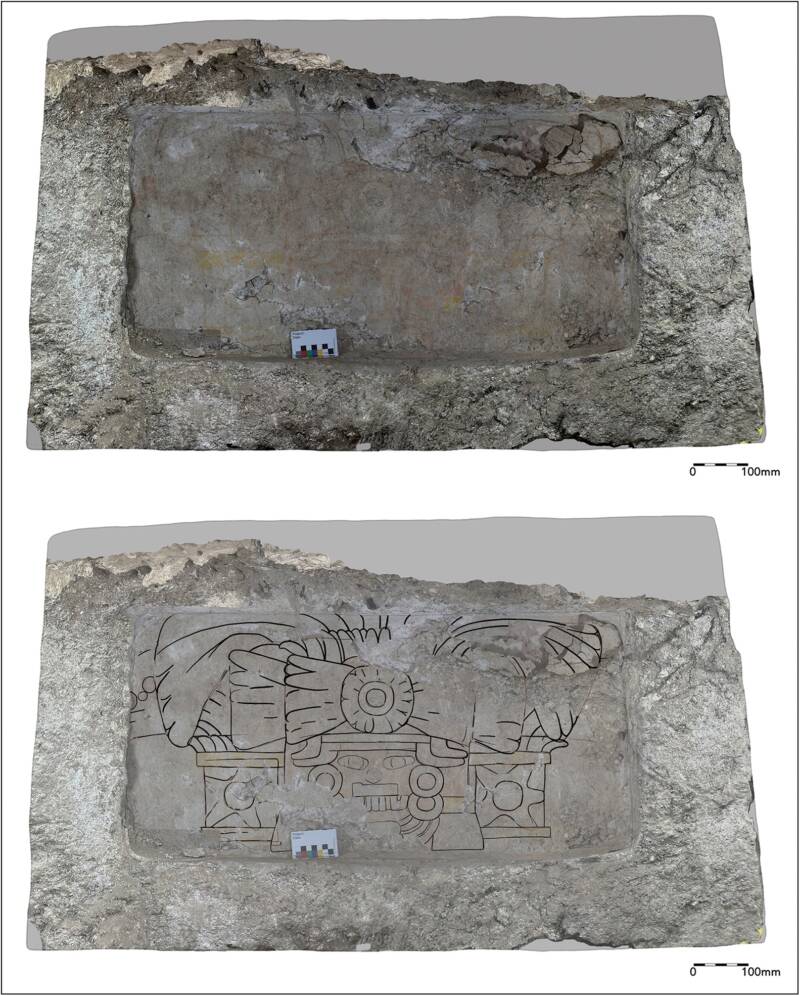
H. Hurst, A. Bass, L. Paiz & E. RománA detail of the altar found in a Tikal residential complex.
The altar was discovered in a residential complex in Tikal, and it took researchers a year and a half to uncover and analyze it before making their announcement. The results of that analysis were also published in Antiquity.
Edwin Román, who leads the South Tikal Archaeological Project within the park, said the discovery serves as evidence of sociopolitical and cultural interactions between the Maya of Tikal and Teotihuacan’s elite sometime between 300 and 500 C.E. He added that the altar is also further proof that Tikal was a cosmopolitan center at that time, a place where cultures converged.
“The Teotihuacan were traders who traveled all over the country,” Paiz said. “The Teotihuacan residential complexes were houses with rooms and in the center altars; that’s what the residence that was found is like, with an altar with the figure representing the Storm Goddess.”
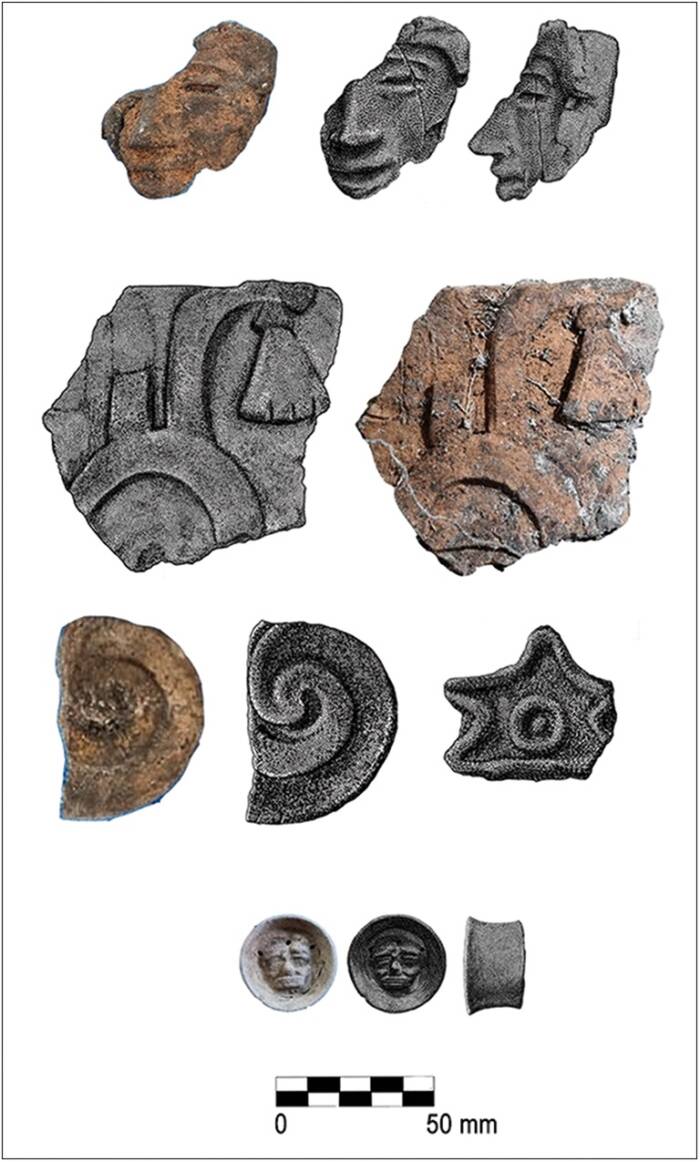
H. Hurst, A. Bass, L. Paiz & E. RománA trove of ancient objects found near the altar.
The altar was just over three feet wide and about six feet long. It stood three feet tall, was covered with limestone, and featured brightly painted designs. The dwelling in which it was found also held anthropomorphic figures with red-toned tassels — a detail from the Teotihuacan culture.
“We see how the issue of sacrifice exists in both cultures,” Méndez added. “It was a practice; it’s not that they were violent, it was their way of connecting with the celestial bodies.”
There are still many mysteries surrounding the Teotihuacan culture, but this discovery offers fascinating new insight into this enigmatic ancient society.
After reading about the Teotihuacan altar found in an ancient Maya city in Guatemala, learn about Moloch, the ancient pagan god of child sacrifice. Or, take a deeper dive into the history of human sacrifice in pre-Columbian America.





